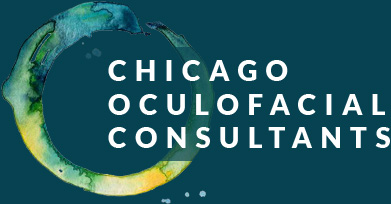Your eyes can express so much about your personality and your soul. They deserve to be framed by the perfect pair of eyelids that define your natural shape. Though the eyelids are designed to protect your eyes from dirt and debris, they can unfortunately develop their own problems over time. Our highly specialized eyelid surgery options can help you reduce and remove the symptoms of ptosis. But what is ptosis, exactly, and will ptosis go away on its own without treatment?
Will Ptosis Go Away on Its Own?
Today, Chicago Oculofacial Consultants will help you understand more about this condition. Ptosis is very treatable, but it might not go away on its own. Reach out to one of our experts to learn more about our individual treatment plans.
What Is Ptosis?
Ptosis, pronounced “toe-sis,” is a condition characterized by drooping or sagging of the upper eyelid. This can happen as a result of aging or other natural causes. Ptosis leads to a lack of symmetry in the face as one eyelid may droop lower than the other.
While it may seem like a minor cosmetic issue, ptosis can have significant implications for both vision and self-esteem. For example, your eyelids can drop below your eyes, obstructing your vision. This can lead to problems with everyday tasks like reading and driving.
Additionally, many individuals with ptosis experience feelings of self-consciousness and dissatisfaction with their appearance. Keep reading to learn about the biggest causes of ptosis and find out why treatment may be necessary for your overall health and well-being.
What Causes Ptosis?
One of the most common causes of ptosis is age-related weakening of the muscles responsible for lifting the eyelid. As you grow older, your skin loses its elasticity and your muscles lose some of their strength. This can cause the delicate tissues of your eyelid to sag deeper and deeper below your eye.
However, ptosis can also be congenital, meaning it is present from birth due to abnormal development of the eyelid muscles. It may be a neurological issue that has made the eyelid muscles weaker without aging. Other potential causes of ptosis include trauma, nerve damage, and certain medical conditions such as myasthenia gravis or Horner’s syndrome.
Will Ptosis Go Away On Its Own?
Unfortunately, ptosis typically does not resolve independently and may worsen over time if left untreated. Some patients are lucky enough to improve eyelid muscle strength on their own, which helps relieve the symptoms. However, these changes are typically short-lived, and the full extent of symptoms will not completely go away without surgical intervention.
The thought of surgery on the eyelids can be daunting. Our experts are here to help you find the perfect procedure that works within your comfort level to restore physical harmony to your eyes. In a quick and effective procedure, our Chicago doctors can remove excess skin and fat to mold your eyelids back to a more youthful shape.
How Blepharoplasty Can Help
Eyelid surgery, which is also known as blepharoplasty, is the best option for mild to severe cases of ptosis. During this procedure, the surgeon will carefully assess the underlying cause of your drooping lids and treat it through a series of techniques. In cases where muscle weakness is the primary issue, the surgeon may tighten or reposition the muscles responsible for lifting the eyelid. This helps to restore its proper position and function.
In addition to correcting ptosis, blepharoplasty can also address other aesthetic concerns such as excess skin or fat deposits around the eyes. By removing or repositioning these tissues, the surgeon can create a more youthful and refreshed appearance while improving overall eyelid function.
Additional Treatment Methods
For individuals with congenital ptosis or severe cases of age-related ptosis, additional surgical techniques may be necessary to achieve optimal results. This may include frontalis sling surgery. In this, a small incision is made in the eyelid crease and a supportive material or tendon lifts the eyelid. This usually can be performed in the same procedure as your regular eyelid lift. All told this saves you time and money in the long run.
Sign Up for Ptosis Treatment Today
Overall, the decision to undergo droopy eyelid surgery should be made in consultation with a qualified oculoplastic surgeon who can evaluate your specific needs and goals. While ptosis may not resolve on its own, timely intervention with surgical treatment can help improve both functionality and looks.
If you are ready to enjoy clearer vision and a stronger sense of confidence, seek out Chicago Oculofacial Consultants for a personal plan of care. We will help you determine the cause of your ptosis symptoms and determine the most appropriate course of action for a healthy future.


